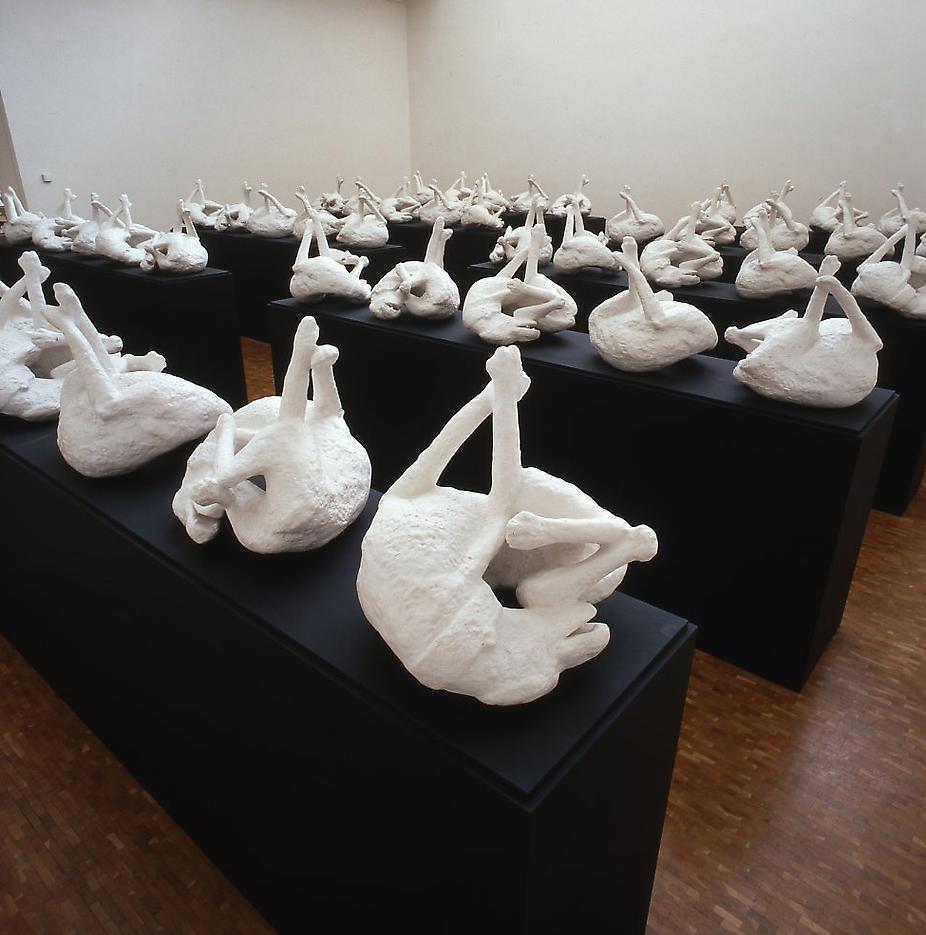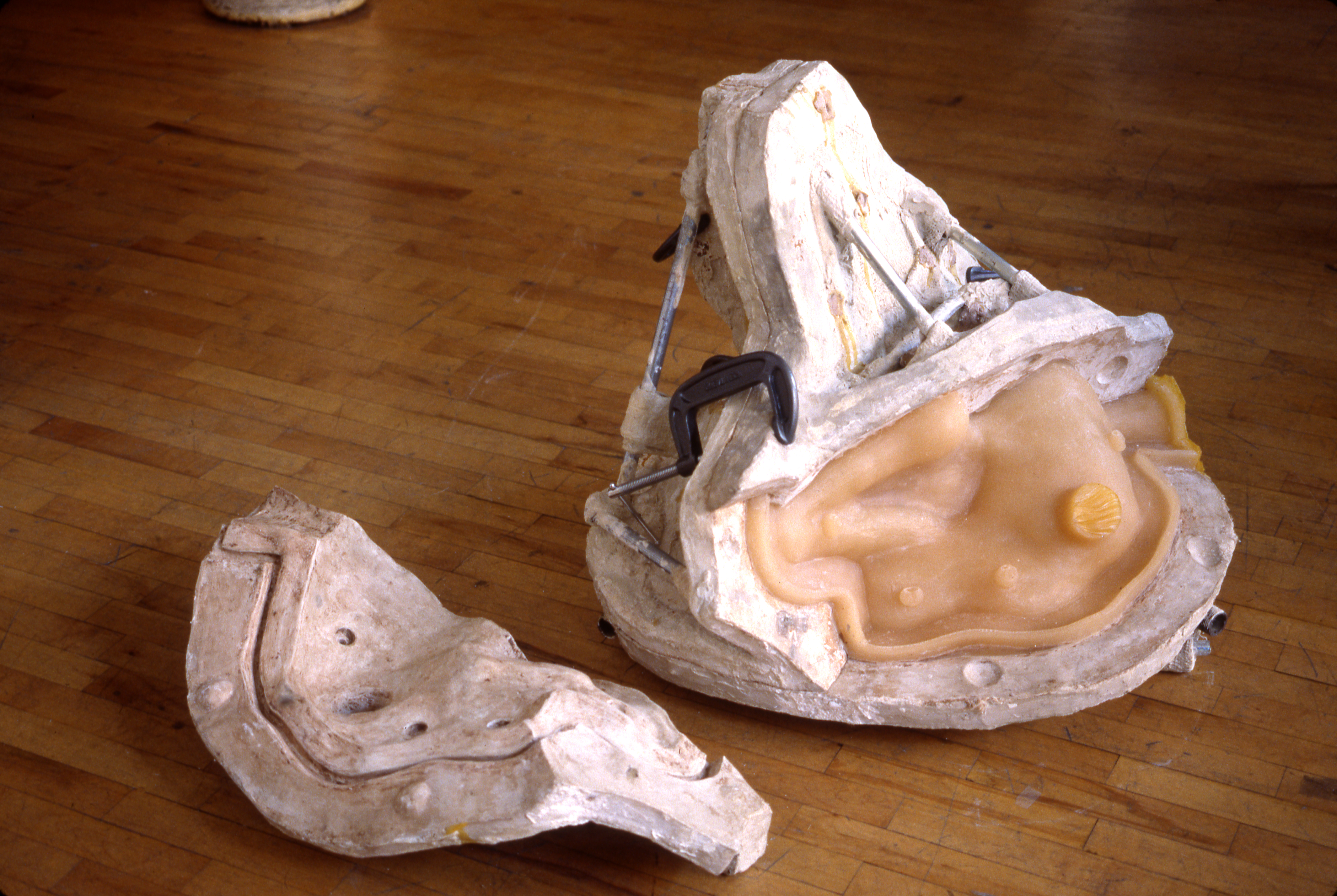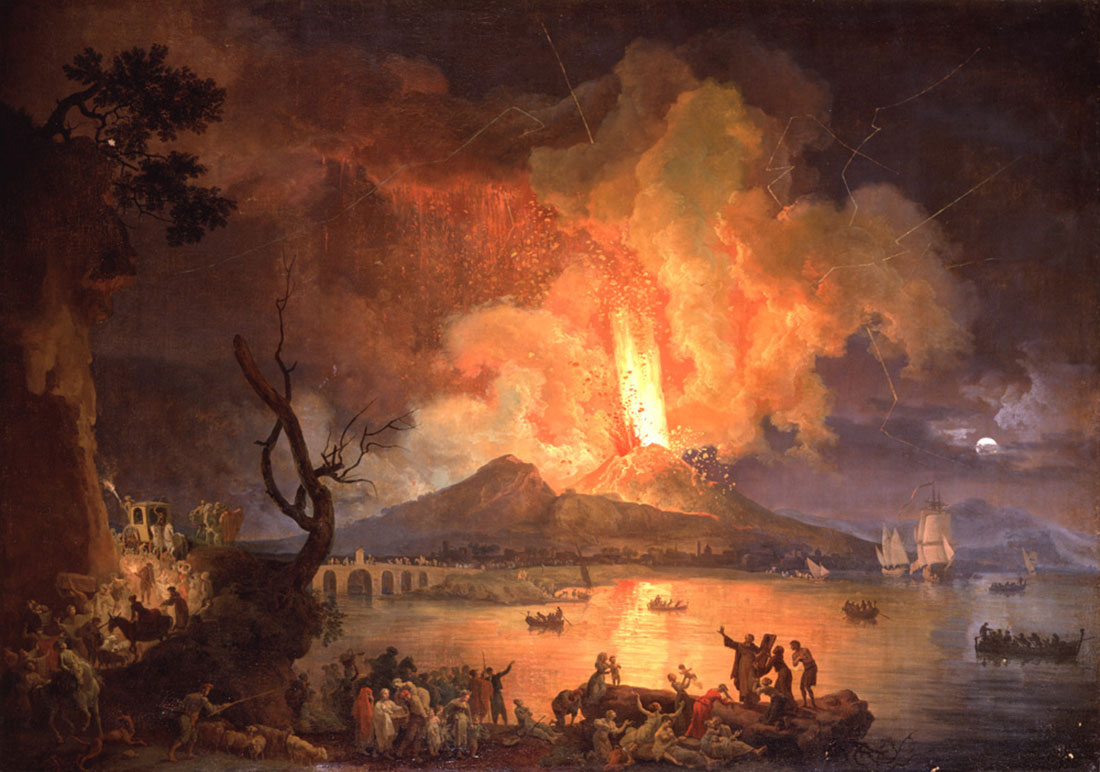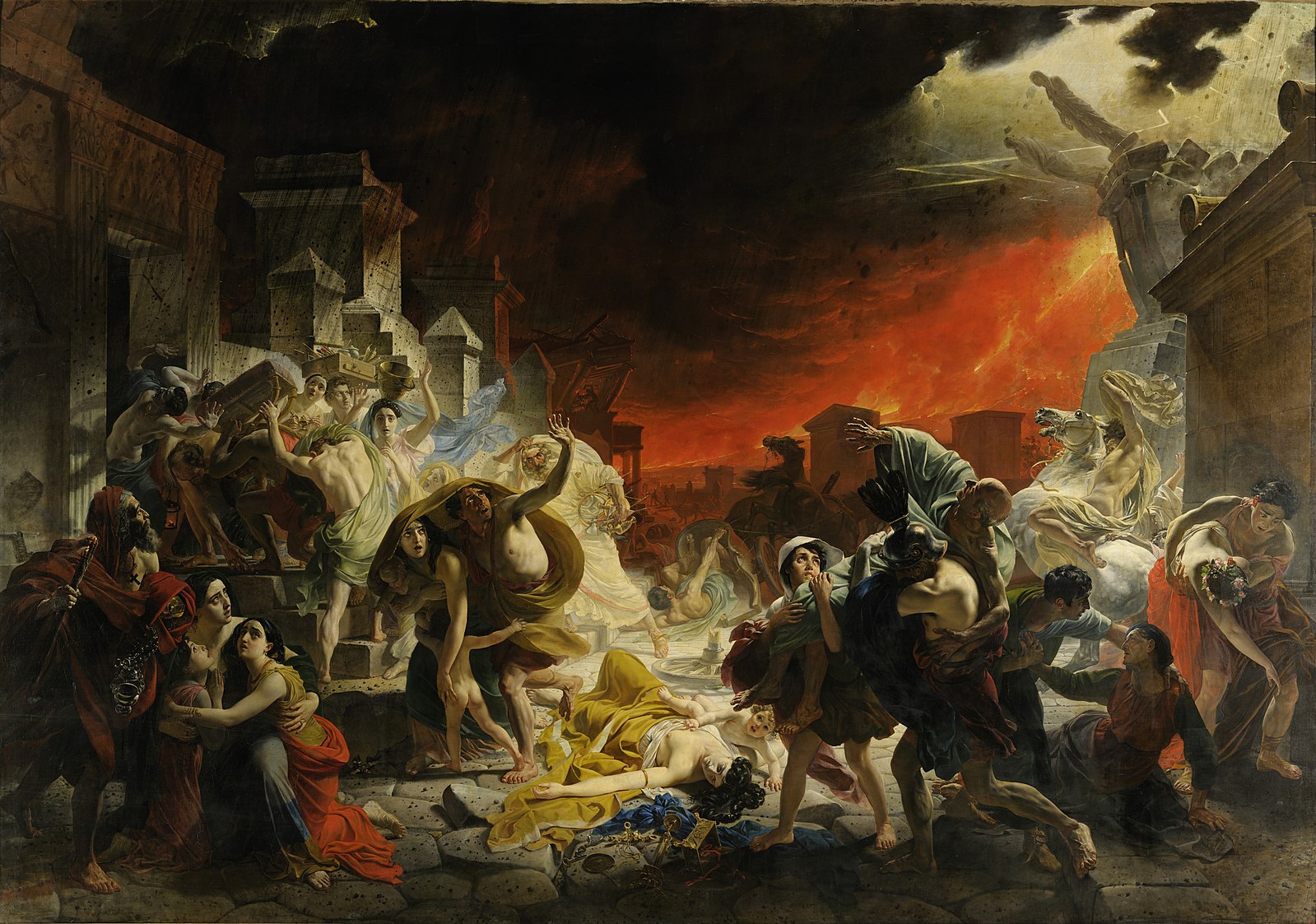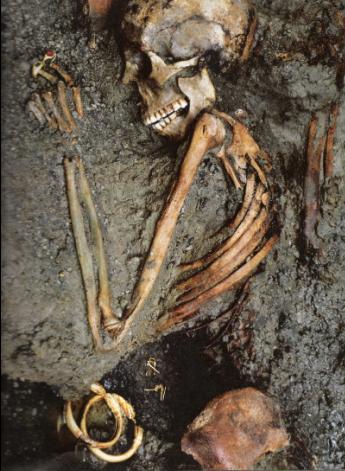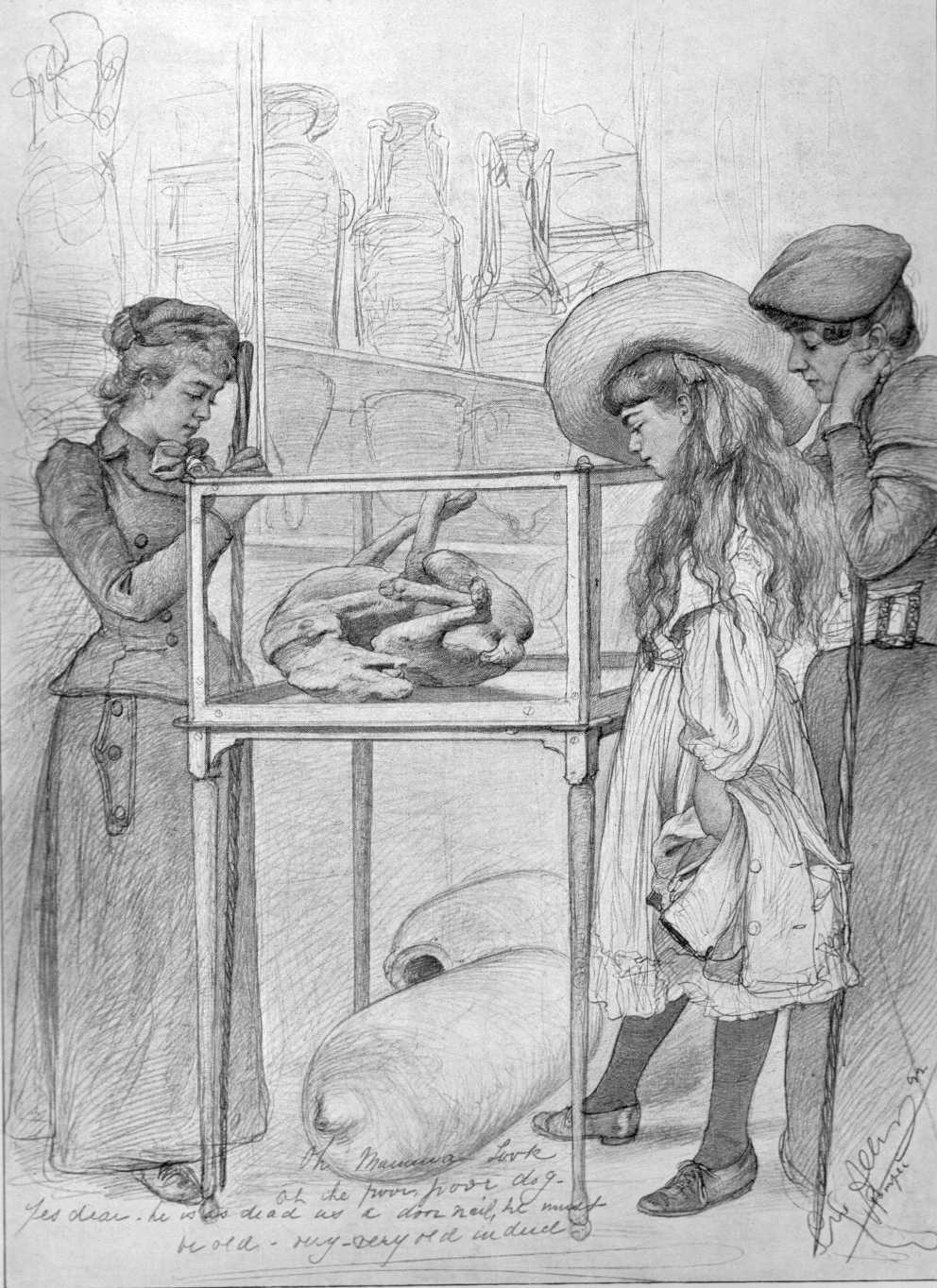The Dog From Pompei
The 79 AD Eruption of Mount Vesuvius and the destruction of Roman cities of Pompeii, Herculaneum, Oplontis, Stabiae, other settlements, and more than 1,500 people, along with pets and wildlife.
Mount Vesuvius is a somma-stratovolcano located on the Gulf of Naples in Campania, Italy, about 9 km (5.6 mi) east of Naples and a short distance from the shore. It is one of several volcanoes which form the Campanian volcanic arc. Vesuvius consists of a large cone partially encircled by the steep rim of a summit caldera caused by the collapse of an earlier and originally much higher structure. Mount Vesuvius is best known for its eruption in AD 79 that led to the burying and destruction of the Roman cities of Pompeii, Herculaneum, Oplontis and Stabiae, as well as several other settlements. The eruption ejected a cloud of stones, ashes and volcanic gases to a height of 33 km (21 mi), spewing molten rock and pulverized pumice at the rate of 6x105 cubic metres (7.8 x 105 cu yd) per second, ultimately releasing a hundred thousand times the thermal energy released by the Hiroshima-Nagasaki bombings. More than 1,000 people died in the eruption, but exact numbers are unknown. The only surviving eyewitness account of the event consists of two letters by Pliny the Younger to the historian Tacitus. Vesuvius has erupted many times since and is the only volcano on the European mainland to have erupted within the last hundred years. Today, it is regarded as one of the most dangerous volcanoes in the world because of the population of 3,000,000 people living nearby, making it the most densely populated volcanic region in the world, as well as its tendency towards violent, explosive eruptions of the Plinian type.
Mount Vesuvius erupted in AD 79 in one of the most famous and deadly volcanic eruptions in European history, which was witnessed and documented by Pliny the Younger, a Roman administrator and poet. Mount Vesuvius violently spewed forth a deadly cloud of super-heated tephra and gases to a height of 33 km (21 mi), ejecting molten rock, pulverized pumice and hot ash at 1.5 million tons per second, ultimately releasing 100,000 times the thermal energy of the Hiroshima-Nagasaki bombings. Several Roman settlements were obliterated and buried underneath massive pyroclastic surges and ashfall deposits, the best known being Pompeii and Herculaneum. After archeological excavations revealed much about the lives of the inhabitants, the area became a major tourist attraction, and is now a UNESCO World Heritage Site, and part of Vesuvius National Park. The total population of both cities was 16,000-20,000. The remains of over 1,500 people have been found at Pompeii and Herculaneum, but the death toll is still unclear. The event is the namesake for the Vesuvian type of volcanic eruptions, characterized by eruption columns of hot gases and ash exploding into the stratosphere, although the event also included pyroclastic flows associated with Pelean eruptions. Notable casualties included Pliny the Elder, a Roman author, naturalist and natural philosopher, and a naval and army commander of the early Roman Empire, and the Jewish princess Drusilla along with her son Agrippa who was born in her marriage with the procurator Antonius Felix. By 2003 around 1,044 casts made from impressions of bodies in the ash deposits had been recovered in and around Pompeii, with the scattered bones of another 100. The remains of about 332 bodies have been found at Herculaneum (300 in arched vaults discovered in 1980). What percentage these numbers are of the total dead or the percentage of the dead to the total number at risk remain completely unknown.
Herculaneum, which was much closer to the crater, was saved from tephra falls by the wind direction, but was buried under 23 metres (75 ft) of material deposited by pyroclastic surges. It is likely that most, or all, of the known victims in this town were killed by the surges, particularly given evidence of high temperatures found on the skeletons of the victims found in the arched vaults, and the existence of carbonised wood in many of the buildings. These people were all caught on the former seashore by the first surge and died of thermal shock but not of carbonization, although some were partly carbonized by later and hotter surges. The arched vaults were most likely boathouses, as the crossbeams in the overhead were probably for the suspension of boats. No boats have been found, indicating they may have been used for the earlier escape of some of the population. The rest were concentrated in the chambers at a density of as high as 3 persons per square meter. As only 85 metres (279 ft) of the coast have been excavated, the casualties waiting to be excavated may well be as high as the thousands.
Dog's remains were found during the excavations of Pompeii The very well-known plaster cast of a dying guard dog found during excavations in 1874 at the House of Marcus Vesonius Primus. The dog was left chained to a post to guard the House of Orpheus when the occupants fled. The bronze studs around its neck are all that remains of a that restrained him collar, with a leash. As the pumice fall-out deepened, the dog climbed higher -- until eventually it ran out of chain and was suffocated. He died there immediately along with so many of the Pompeians. The tragedy of 79 AD not only killed over 1,500 human inhabitants, it also killed many pets and resident wildlife. Further skeletal remains of dogs have been recorded at a number of other locations within Pompeii, the most interesting of which would appear to be the bones of a large dog lying on its side, shut inside the House of Menander. The creature seems to have survived being buried by ash, but sadly then would have died from asphyxiation. The plaster casts of the men, women, children, and animals of Pompeii were primarily made in the mid-1800s. The building they were originally housed in suffered extensive damage in World War II, and they are now located in several places around the city. The Antiquarium, near the Forum, once held most of the plaster casts. It was damaged during Allied bombing in 1943, and has been closed since 1978 for restoration.
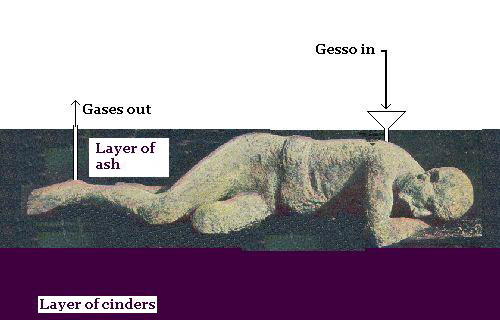 Casting diagram  Interior of Pompeii Museum before 1889 Photo: Edizioni Brogi 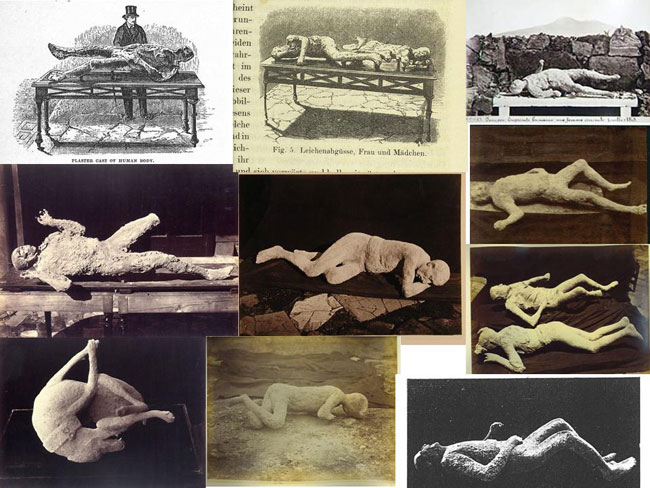 Composite image of the first twelve casts, 1863-78 Photo: Various nineteenth-century  The first cast, The Soldier, cast of 1863 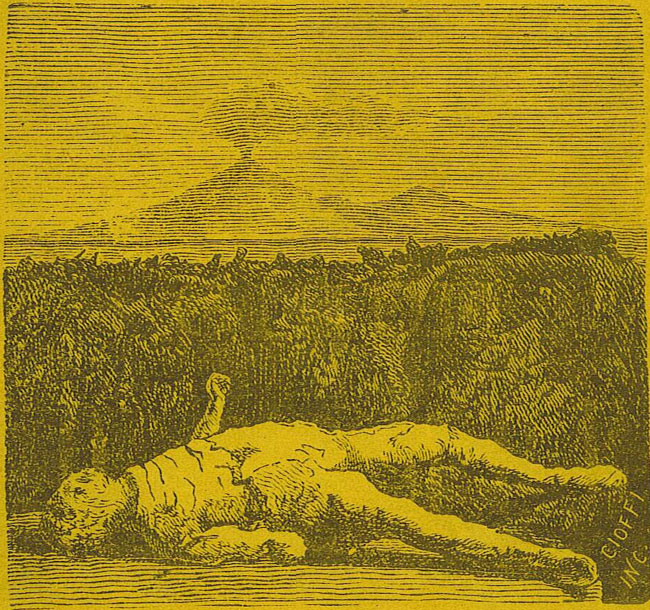 The fourth cast, The Pregnant Woman, cast of 1863 From Cioffi (after photograph), c.1900 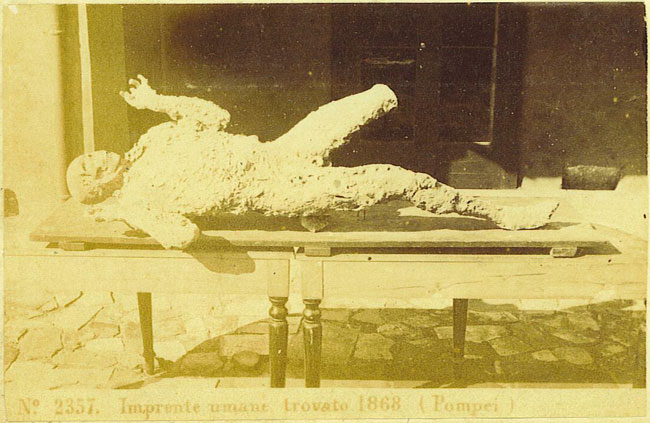 Suffocated Man, cast of 1868. Photo: G. Sommer 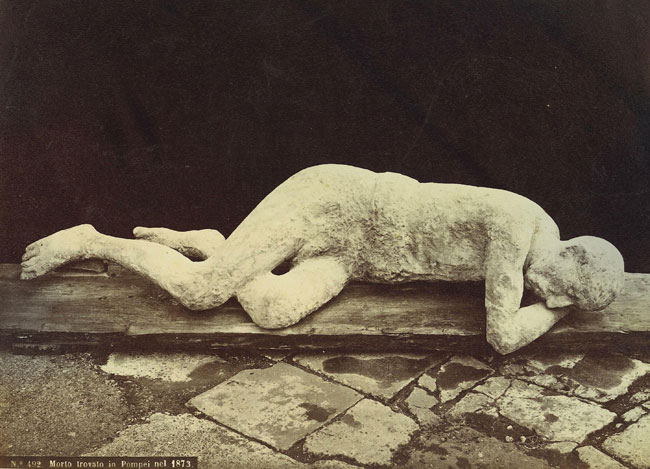 Sleeping Man, cast of 1873 Photo: Unknown 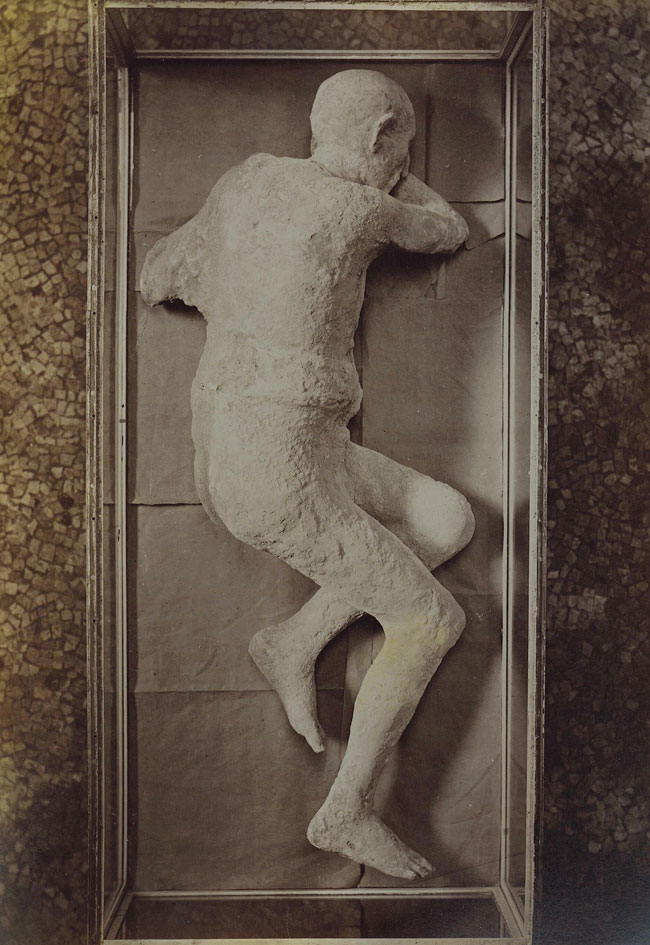 Sleeping Man, cast of 1873 Photo: Edizioni Brogi 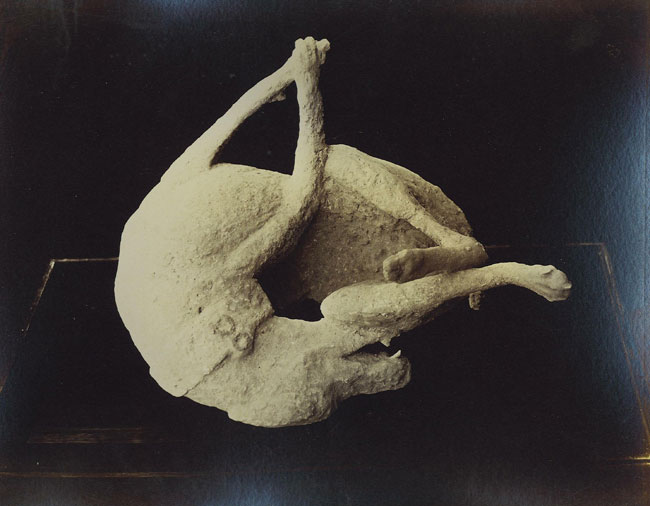 Watchdog, cast of 1874 Photo: G. Sommer 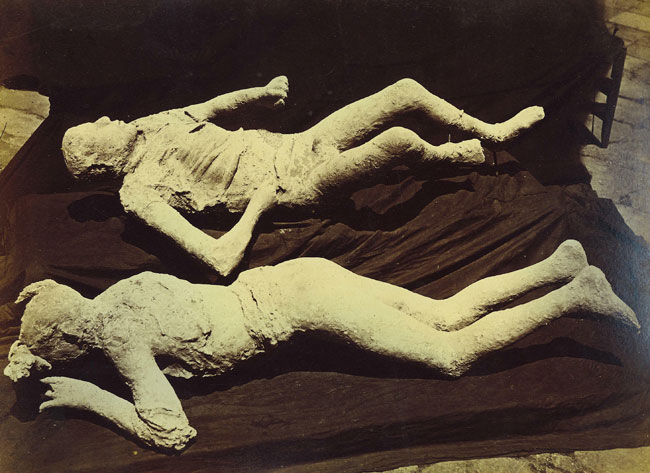 Man and Woman from Strada Stabiana, cast of 1873 Photo: G. Sommer  Woman from Strada Stabiana, cast of 1873 Photo: Edizioni Brogi  Little Boy, cast of 1882 Photo: G. Sommer  Little Boy From llustrated London News, 80, no. 2236 (11 March 1883), p.228 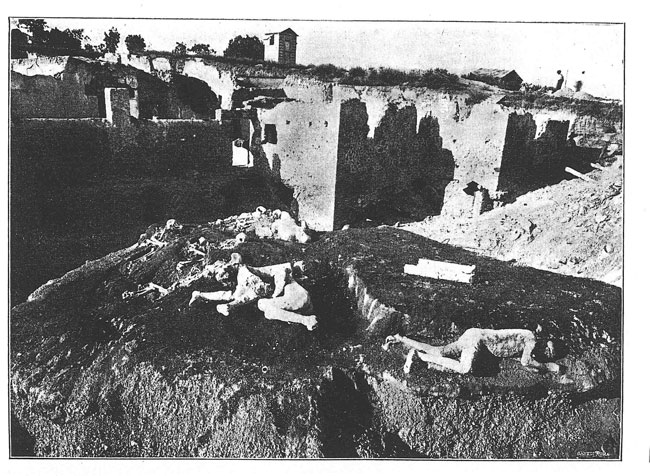 Casts at the excavations of 1914 From Notizie degli scavi archeologici, 1914, p.366 |
